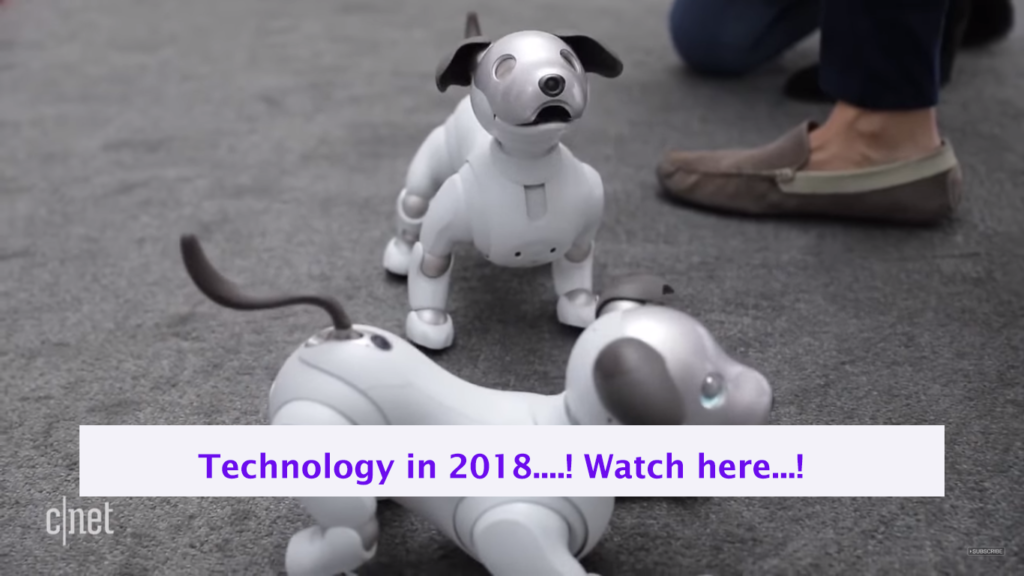Invest in project is initiated to give life to the ideas of the people around the world.Its a platform intended to motivate the people who have clear ideas which will bring life easier. we share maximum ideas that could really make changes in the way people approach every idea. Expecting people to think and act and utilize every opportunity they have. There are a lot of ideas in every field; we will try to share almost every area and those who are interested can contact us any time. Let’s hope for the best things to happen. Join here with us to contribute effectively to this concept.
Fruit picking robots, driverless tractor / sprayer, and sheep shearing robots are designed to replace human labor. In most cases, a lot of factors have to be considered (e.g., the size and color of the fruit to be picked) before the commencement of a task. Robots can be used for other horticultural tasks such as pruning, weeding, spraying and monitoring. Robots can also be used in livestock applications (livestock robotics) such as automatic milking, washing and castrating. Robots like these have many benefits for the agricultural industry, including a higher quality of fresh produce, lower production costs, and a smaller need for manual labor. They can also be used to automate manual tasks, such as weed or bracken spraying, where the use of tractors and other manned vehicles is too dangerous for the operators.
Fieldwork Robot
The mechanical design consists of an end effector, manipulator, and gripper. Several factors must be considered in the design of the manipulator, including the task, economic efficiency, and required motions. The end effector influences the market value of the fruit and the gripper’s design is based on the crop that is being harvested.
End effectors
An end effector in an agricultural robot is the device found at the end of the robotic arm, used for various agricultural operations. Several different kinds of end effectors have been developed. In an agricultural operation involving grapes in Japan, end effectors are used for harvesting, berry-thinning, spraying, and bagging. Each was designed according to the nature of the task and the shape and size of the target fruit. For instance, the end effectors used for harvesting were designed to grasp, cut, and push the bunches of grapes.
Berry thinning is another operation performed on the grapes, and is used to enhance the market value of the grapes, increase the grapes’ size, and facilitate the bunching process. For berry thinning, an end effector consists of an upper, middle, and lower part. The upper part has two plates and a rubber that can open and close. The two plates compress the grapes to cut off the rachis branches and extract the bunch of grapes. The middle part contains a plate of needles, a compression spring, and another plate which has holes spread across its surface. When the two plates compress, the needles punch holes through the grapes. Next, the lower part has a cutting device which can cut the bunch to standardize its length.
For spraying, the end effector consists of a spray nozzle that is attached to a manipulator. In practice, producers want to ensure that the chemical liquid is evenly distributed across the bunch. Thus, the design allows for an even distribution of the chemical by making the nozzle to move at a constant speed while keeping distance from the target.
The final step in grape production is the bagging process. The bagging end effector is designed with a bag feeder and two mechanical fingers. In the bagging process, the bag feeder is composed of slits which continuously supply bags to the fingers in an up and down motion. While the bag is being fed to the fingers, two leaf springs that are located on the upper end of the bag hold the bag open. The bags are produced to contain the grapes in bunches. Once the bagging process is complete, the fingers open and release the bag. This shuts the leaf springs, which seals the bag and prevents it from opening again.
Gripper
The gripper is a grasping device that is used for harvesting the target crop. Design of the gripper is based on simplicity, low cost, and effectiveness. Thus, the design usually consists of two mechanical fingers that are able to move in synchrony when performing their task. Specifics of the design depend on the task that is being performed. For example, in a procedure that required plants to be cut for harvesting, the gripper was equipped with a sharp blade.
Manipulator
The manipulator allows the gripper and end effector to navigate through their environment. The manipulator consists of four-bar parallel links that maintain the gripper’s position and height. The manipulator also can utilize one, two, or three pneumatic actuators. Pneumatic actuators are motors which produce linear and rotary motion by converting compressed air into energy. The pneumatic actuator is the most effective actuator for agricultural robots because of its high power-weight ratio. The most cost efficient design for the manipulator is the single actuator configuration, yet this is the least flexible option.
Applications
Robots have many fields of application in agriculture. Some examples and prototypes of robots include the Merlin Robot Milker, Rosphere, Harvest Automation, Orange Harvester, lettuce bot and weeder. One case of a large scale use of robots in farming is the milk bot. It is widespread among British dairy farms because of its efficiency and nonrequirement to move. According to David Gardner (chief executive of the Royal Agricultural Society of England), a robot can complete a complicated task if its repetitive and the robot is allowed to sit in a single place. Furthermore, robots that work on repetitive tasks (e.g. milking) fulfill their role to a consistent and particular standard.
Another field of application is horticulture. One horticultural application is the development of RV100 by Harvest Automation Inc. RV 100 is designed to transport potted plants in a greenhouse or outdoor setting. The functions of RV100 in handling and organizing potted plants include spacing capabilities, collection, and consolidation. The benefits of using RV100 for this task include high placement accuracy, autonomous outdoor and indoor function, and reduced production costs.
Artificial intelligence (AI, also machine intelligence, MI) is intelligence demonstrated by machines, in contrast to the natural intelligence (NI) displayed by humans and other animals. In computer science AI research is defined as the study of “intelligent agents”: any device that perceives its environment and takes actions that maximize its chance of successfully achieving its goals. Colloquially, the term “artificial intelligence” is applied when a machine mimics “cognitive” functions that humans associate with other human minds, such as “learning” and “problem solving”.
The scope of AI is disputed: as machines become increasingly capable, tasks considered as requiring “intelligence” are often removed from the definition, a phenomenon known as the AI effect, leading to the quip, “AI is whatever hasn’t been done yet.” For instance, optical character recognition is frequently excluded from “artificial intelligence”, having become a routine technology. Capabilities generally classified as AI as of 2017 include successfully understanding human speech, competing at the highest level in strategic game systems (such as chess and Go), autonomous cars, intelligent routing in content delivery network and military simulations.
Artificial intelligence was founded as an academic discipline in 1956, and in the years since has experienced several waves of optimism, followed by disappointment and the loss of funding (known as an “AI winter”), followed by new approaches, success and renewed funding. For most of its history, AI research has been divided into subfields that often fail to communicate with each other. These sub-fields are based on technical considerations, such as particular goals (e.g. “robotics” or “machine learning”), the use of particular tools (“logic” or “neural networks”), or deep philosophical differences. Subfields have also been based on social factors (particular institutions or the work of particular researchers).
The traditional problems (or goals) of AI research include reasoning, knowledge representation, planning, learning, natural language processing, perception and the ability to move and manipulate objects. General intelligence is among the field’s long-term goals. Approaches include statistical methods, computational intelligence, and traditional symbolic AI. Many tools are used in AI, including versions of search and mathematical optimization, neural networks and methods based on statistics, probability and economics. The AI field draws upon computer science, mathematics, psychology, linguistics, philosophy and many others.
The field was founded on the claim that human intelligence “can be so precisely described that a machine can be made to simulate it”. This raises philosophical arguments about the nature of the mind and the ethics of creating artificial beings endowed with human-like intelligence, issues which have been explored by myth, fiction and philosophy since antiquity. Some people also consider AI to be a danger to humanity if it progresses unabatedly. Others believe that AI, unlike previous technological revolutions, will create a risk of mass unemployment.
In the twenty-first century, AI techniques have experienced a resurgence following concurrent advances in computer power, large amounts of data, and theoretical understanding; and AI techniques have become an essential part of the technology industry, helping to solve many challenging problems in computer science.
CES is the world’s gathering place for all those who thrive on the business of consumer technologies. It has served as the proving ground for innovators and breakthrough technologies for 50 years — the global stage where next-generation innovations are introduced to the marketplace.
Owned and produced by the Consumer Technology Association (CTA), it attracts the world’s business leaders and pioneering thinkers.

